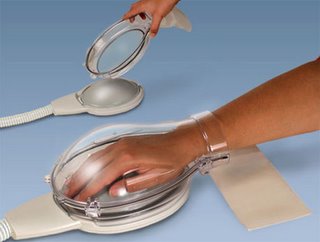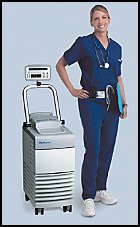From the
Princeton Daily Clarion:
PRINCETON-A former emergency room physician faces a theft and drug possession charge in Gibson Circuit Court.
Michael T. Rogan, 37, Evansville, was arrested early Sunday morning by Princeton police at Gibson General Hospital , and appeared in court Monday.
Rogan entered a not guilty plea to charges of stealing controlled substances and syringes from the hospital, and to possession of a controlled substance.
Judge Walter Palmer appointed Neta Schleter as his attorney and set bond at $7,500 surety or $750 cash before scheduling a pre-trial hearing for 9 a.m. Dec. 12.
According to an affidavit for probable cause filed by Princeton Police Sgt. Stan McNeece, the arrest came after police got a 2 a.m. call from Gibson General emergency room staff, reporting Rogan walked through the ER with a large duffel bag, heading toward the surgery suite.
McNeece said hospital staff reported Rogan hadn't worked at the hospital for approximately two years, and while he told GGH staff that he was going to clean out his locker, there was no plausible reason for him to be in the hospital at that hour. McNeece said he walked into the surgery suite and saw Rogan standing in the physician break room, with four sealed syringes sticking out of his back pocket.
The police officer said Rogan was “acting very nervous and was standing beside the duffel bag.” McNeece said Rogan gave permission for him to search the bag for any weapons.
“I opened the duffel bag and located three red ‘sharps' containers, each containing numerous drug vials and syringes,” he wrote in the affidavit.
McNeece said he also removed the syringes from Rogan's back pocket.
The police officer wrote that Rogan told him he took the sharps containers and syringes from the surgery rooms.
In the report McNeece noted, “given his former position as a physician, he knows that unused schedule drugs can be obtained from these sharps containers. I asked ER staff to look into the containers to see if any unused controlled substances could be seen in the containers. Several were identified by looking into the top of the container.”
McNeece said he contacted the hospital administrator, who asked police to take appropriate action. Rogan was arrested for the theft and drug possession charges.
At the hospital, police and staff inventoried the contents of the containers. McNeece said several substances, including two vials of Midazolam, two vials of Duramorph, several vials of Demerol and a syringe full of Fentanyl were identified.
Rogan was charged with possession of the Duramorph and Fentanyl, two narcotic analgesics.







